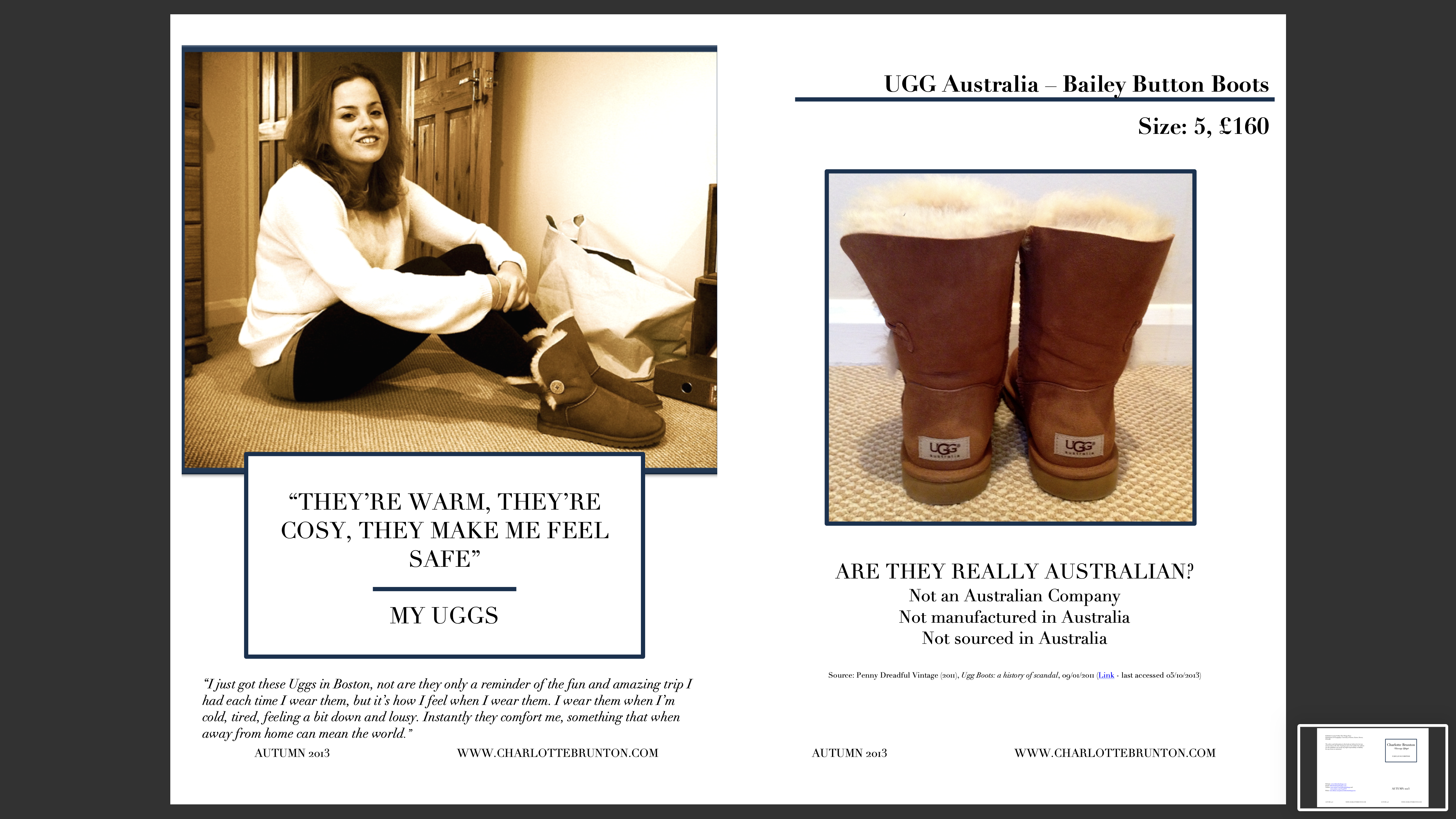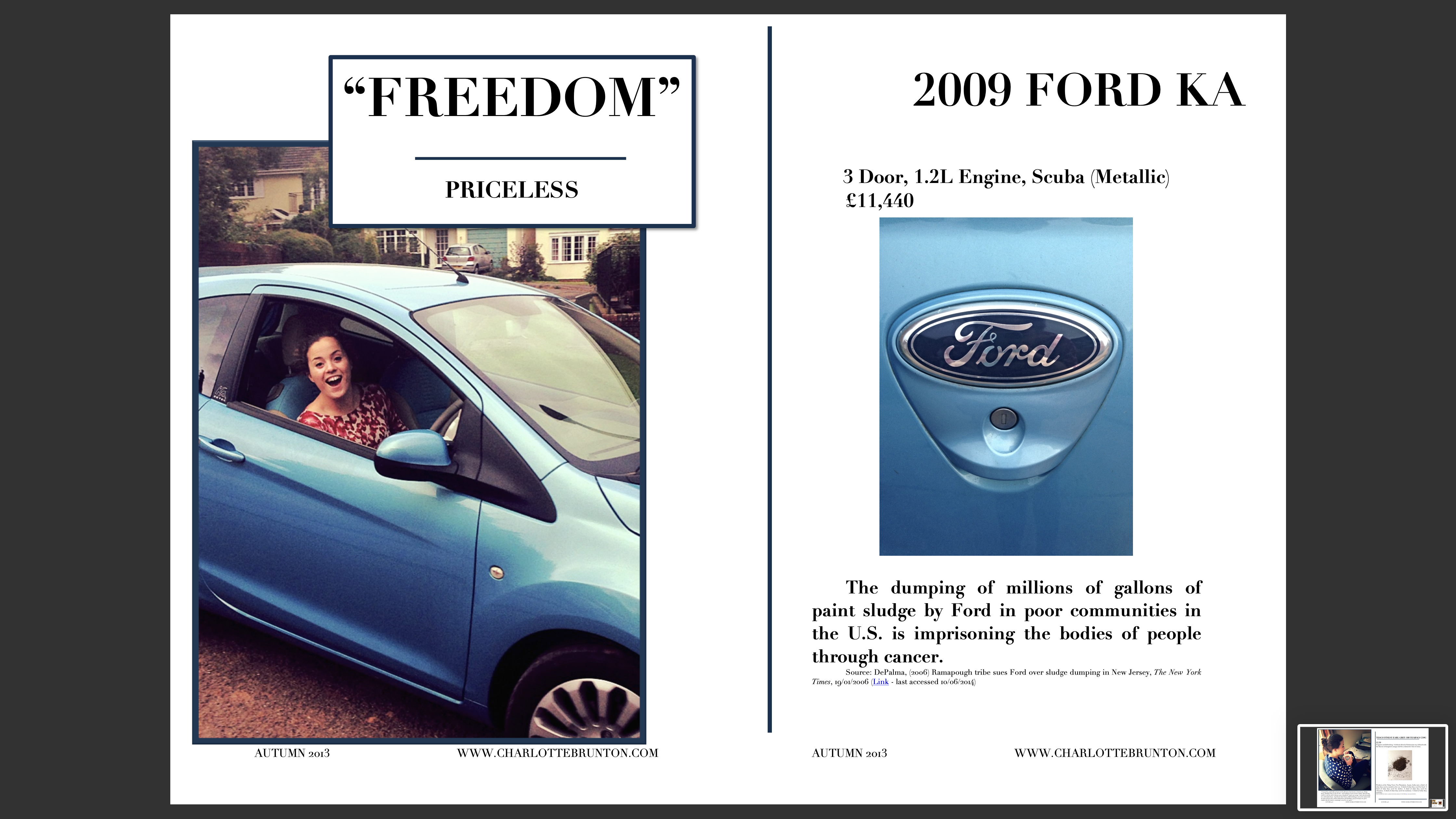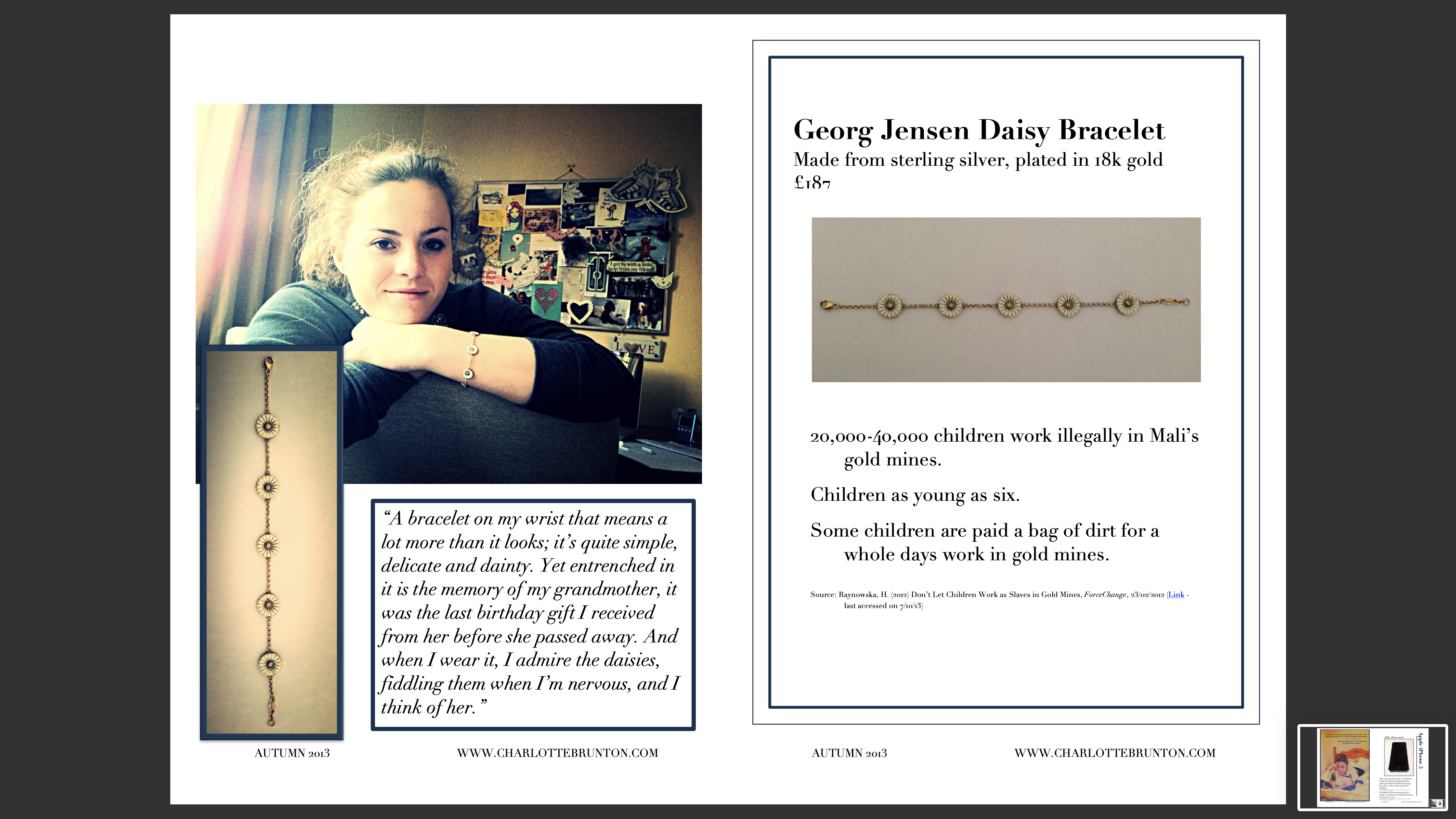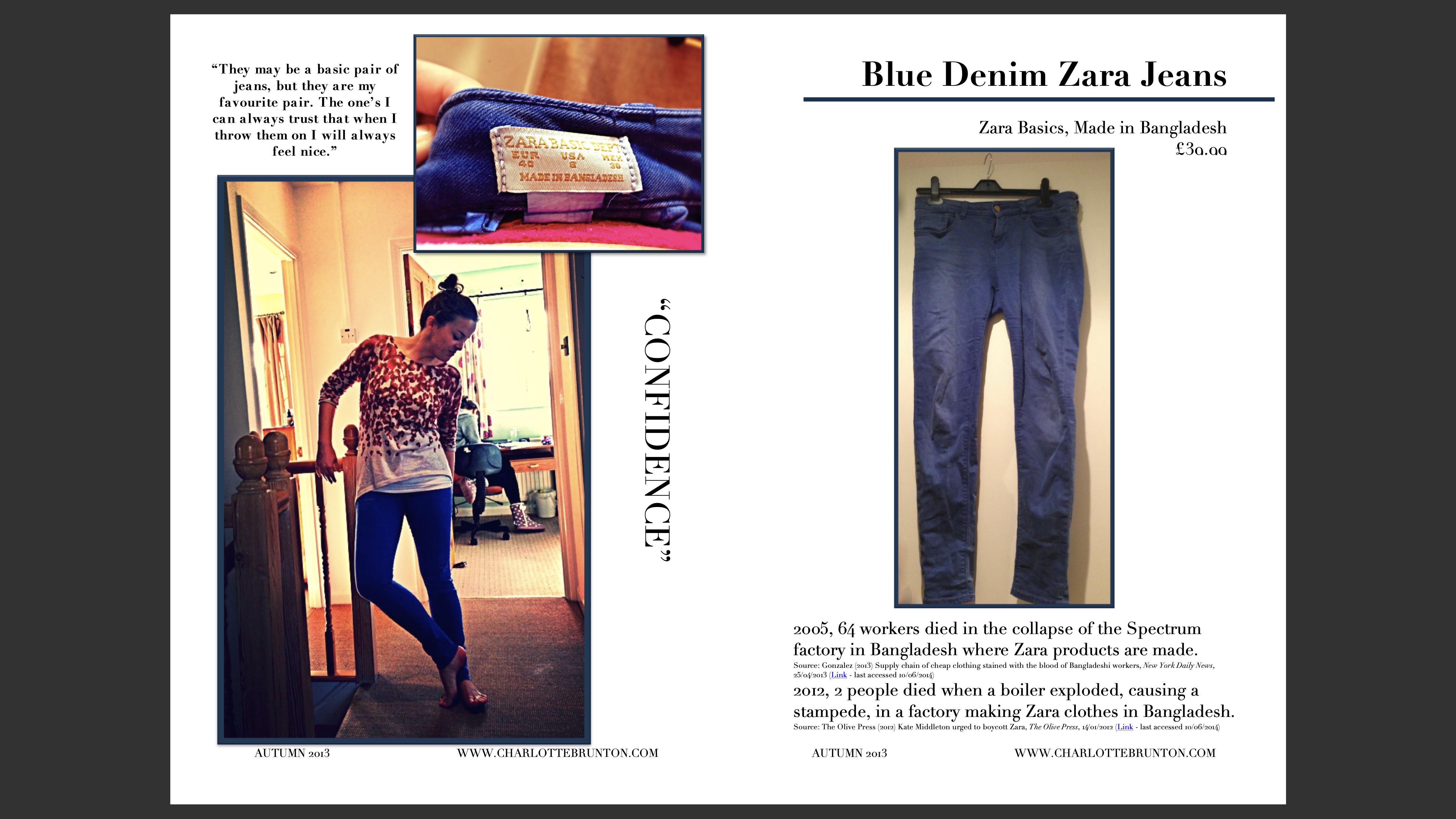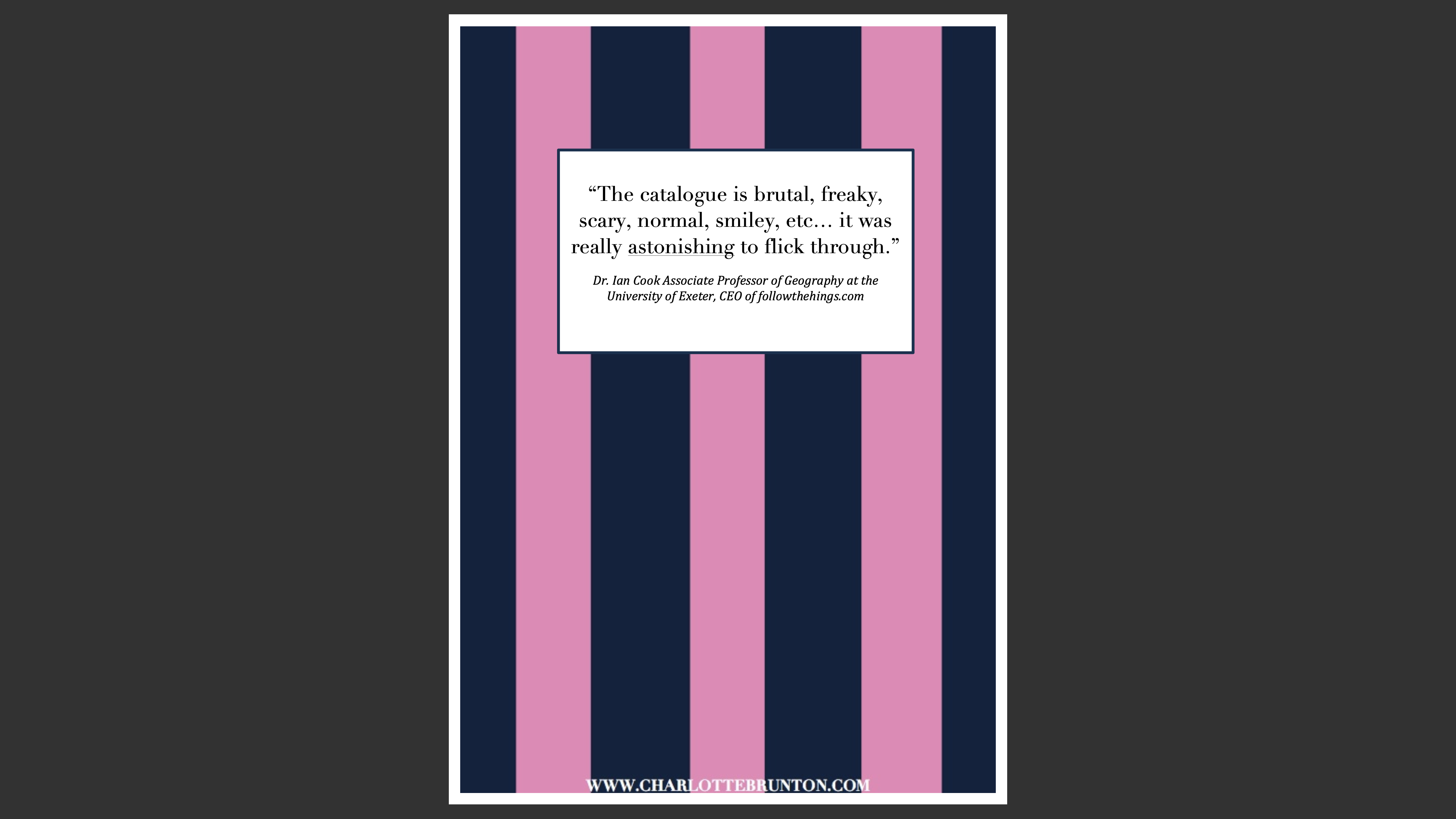

followthethings.com
Fashion
“Socks“
Undergraduate coursework written by David Roberts, published in the Teaching Geography journal.
Full text above. Reference below (Cook et al 2007).
The students’ first task in the ‘Geographies of Material Culture’ module at the University of Birmingham is to make a personal connection between their lives and the lives of others elsewhere in the world who made the things they buy. These are the people who help you to be you, followthethings.com CEO Ian tells them. So choose a commodity that matters to you, that’s an important part of your identity, that you couldn’t do without. Think about its component parts, its materials, and what properties they give to that commodity and your experience of ‘consuming’ it. And write a 500 word first person account that connects your lives via that thing. One student – David Roberts – thinks about his Marks & Spencer socks. He has a drawer full of them. And none of them has a ‘made in’ label. After some online detective work, he’s finds one pair were made for him far away in Bulgaria in a factory owned by an Israeli company that’s fighting battles against consumers boycotting their goods because they’re also made by non-unionised workers in factories in Palestine’s Occupied Territories. Marks & Spencer encourages its shoppers to ‘Look Behind The Label’. And that’s exactly what he’s done. He finds some uncomfortable geopolitical issues are protecting his feet.
Page reference: David Roberts (2006) Socks. followthethings.com/socks.shtml (last accessed <insert date here>)
Estimated reading time: 7 minutes.
Continue reading Socks


